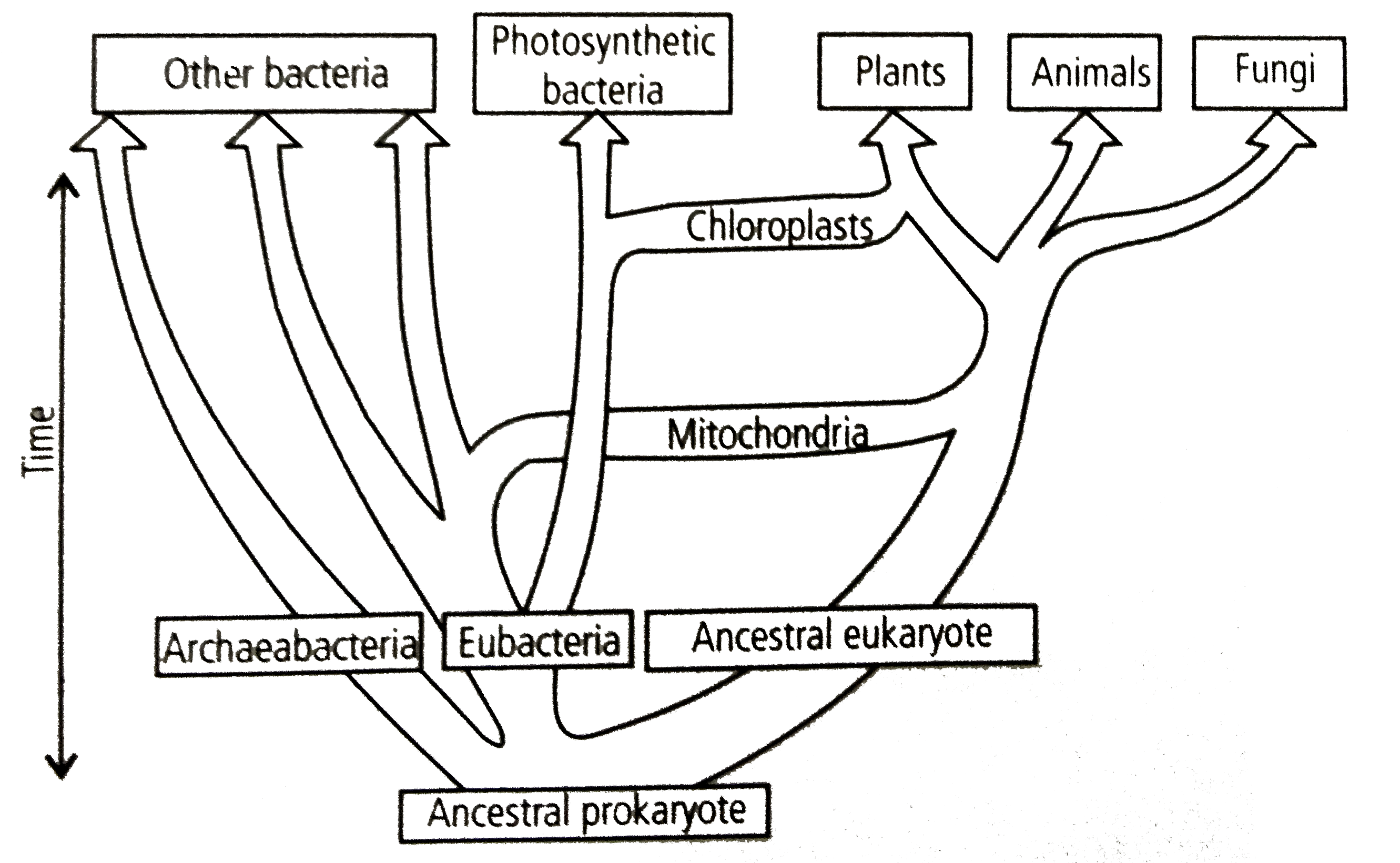Which of the following statements (s) is (are) correct ?
(i) Pyruvate can be converted into ethanol and carbon dioxide by yeast
(ii) Fermantation takes place in aerobic bacteia
(iii) Fermantation takes place in mitochondria
(iv) Fermentation is a form of anaerobic respiration
(i) and (iii)
(ii) and (iv)
(i) and (iv)
(ii) and (iii)
The correct Answer is:C
To determine which of the statements are correct, let's analyze each one step-by-step:
1. Statement (i): Pyruvate can be converted into ethanol and carbon dioxide by yeast.
- This statement is correct. In the process of fermentation, yeast converts pyruvate (which is derived from glucose through glycolysis) into ethanol and carbon dioxide. This process occurs in the cytoplasm of the yeast cells and is a form of anaerobic respiration.
2. Statement (ii): Fermentation takes place in aerobic bacteria.
- This statement is incorrect. Fermentation is an anaerobic process, meaning it occurs in the absence of oxygen. It primarily takes place in anaerobic organisms, including certain bacteria and yeast, not aerobic bacteria.
3. Statement (iii): Fermentation takes place in mitochondria.
- This statement is also incorrect. Fermentation occurs in the cytoplasm of the cell, not in the mitochondria. Mitochondria are involved in aerobic respiration, which requires oxygen.
4. Statement (iv): Fermentation is a form of anaerobic respiration.
- This statement is correct. Fermentation is indeed a type of anaerobic respiration, as it does not require oxygen and allows organisms to generate energy in low-oxygen environments.
Conclusion:
- The correct statements are (i) and (iv). Therefore, the answer is that statements (i) and (iv) are correct.
- This statement is correct. In the process of fermentation, yeast converts pyruvate (which is derived from glucose through glycolysis) into ethanol and carbon dioxide. This process occurs in the cytoplasm of the yeast cells and is a form of anaerobic respiration.
- This statement is incorrect. Fermentation is an anaerobic process, meaning it occurs in the absence of oxygen. It primarily takes place in anaerobic organisms, including certain bacteria and yeast, not aerobic bacteria.
- This statement is also incorrect. Fermentation occurs in the cytoplasm of the cell, not in the mitochondria. Mitochondria are involved in aerobic respiration, which requires oxygen.
- This statement is correct. Fermentation is indeed a type of anaerobic respiration, as it does not require oxygen and allows organisms to generate energy in low-oxygen environments.
- The correct statements are (i) and (iv). Therefore, the answer is that statements (i) and (iv) are correct.
Topper's Solved these Questions
- BOOK - NCERT EXEMPLAR ENGLISHCHAPTER - LIFE PROCESSESEXERCISE - Short Answer Type Questions36videos
LIFE PROCESSES
- BOOK - NCERT EXEMPLAR ENGLISHCHAPTER - LIFE PROCESSESEXERCISE - Long Answer Type Questions11videos
LIFE PROCESSES
- BOOK - NCERT EXEMPLAR ENGLISHCHAPTER - HOW DO ORGANISMS REPRODUCEEXERCISE - Long Answer Type Questions10videos
HOW DO ORGANISMS REPRODUCE
- BOOK - NCERT EXEMPLAR ENGLISHCHAPTER - OUR ENVIRONMENTEXERCISE - LONG ANSWER TYPE QUESTIONS8videos
OUR ENVIRONMENT
Similar Questions
Which of the following statement is/are correct ?
(i) Formation of rhodopsin takes place in dark adaptation
(ii) Destruction of rhodopsin takes place in light adaptation
(iii) Destruction of rhodopsin takes place in dark adaptation
(iv) Formation of rhodopsin takes place in light adaptationView SolutionWhich of the following statements are correct? Write a correct form of each of the incorrect statements. (i) a⊂{a,b,c} (ii) {a}∈{a,b,c} (iii) a∈{{a},b}
View Solution
Knowledge Check
- Question 1 - Select One
Which of the following changes take place during roasting ?
(i) Impurities are removed as they form volatile oxides.
(ii) Ore is converted into their volatile oxides.
(iii) Changes like oxidation , chlorination, etc. take placeA(i) and (ii)B(ii) and (iii)C(i) and (iii)D(i), (ii) and (iii) - Question 2 - Select One
Which of the following statements regarding viruses are correct?
(i) These are cellular, infectious, nucleoprotein particles.
(ii) They can be grown in culture medium.
(iii) Genetic material is either DNA or RNA, but never both.
(iv) They can be crystallised.Ai and iiBii and iiiCiii and ivDi,ii,iii and iv - Question 3 - Select One
Which of the following statements are correct?
(i). Renal vein takes blood away from kidney.
(ii). Urine gets diluted in ascending limb of loop of Henle.
(iii). Podocyte occur in inner wall of Bowman's capsule.
(iv). Ultrafiltrate/nephric filtrate is plasma minus proteins.A(i) and (ii)B(i) and (iii)C(iii) and (iv)D(i),(ii),(iii) and (iv)
Which of the following statements are true about respiration ?
(i) during inhalation, ribs move inward and diaphragm is raised
(ii) the gaseous exchange takes place in the alveoli
(iii) haemoglobin has greater affinity for carbon dioxide than oxygen
(iv) alveoli increase surface area for the exchange of gasesView SolutionWhich of the following statements are correct? Write a correct form of each of the incorrect statements. (i) φ∈{a,b} (ii) φ⊂{a,b,c} (iii) {x:x+3=3}=φ
View SolutionWhich of the following statements are correct with respect to a biorector ?
(i) It can process large volumes of culture.
(ii) It provides optimum temperature and pH.
(iii) It is a completely automated tool.
(iv) It is a compact thermal cycler.View SolutionWhich of the following statements are correct ?
(i) Benzene hexachloride (BHC) is a non-biodegradable pollutant.
(ii) Anthropogenic air pollutants are natural in origin.
(iii) Carbon monoxide is a primary air pollutant.
(iv) Sulphur dioxide causes brown air effect during traffic congestion in cities.View SolutionGiven diagram illustrates an evolutionary tree.

Which of the following statements can be deduced from the given evolutionary tree?
(i) The ancestral eukaryotes were anaerobic.
(ii) All eukaryotes were anaerobic.
(ii) All eukaryotes possess mitochondria.
(iii) Eubacteria and Eukaryota have a common ancestor whereas Archebacteria have a unique and independent origin.
(iv) Mitochondria and chloroplasts have similar genomes.
(v) Mitochondria are presents in plants, animals and fungi.
(vi) chloroplasts and mitochondria arose asendosymbionts.
(vii) Fungi and animals lost chloroplasts during evolution.View Solution

